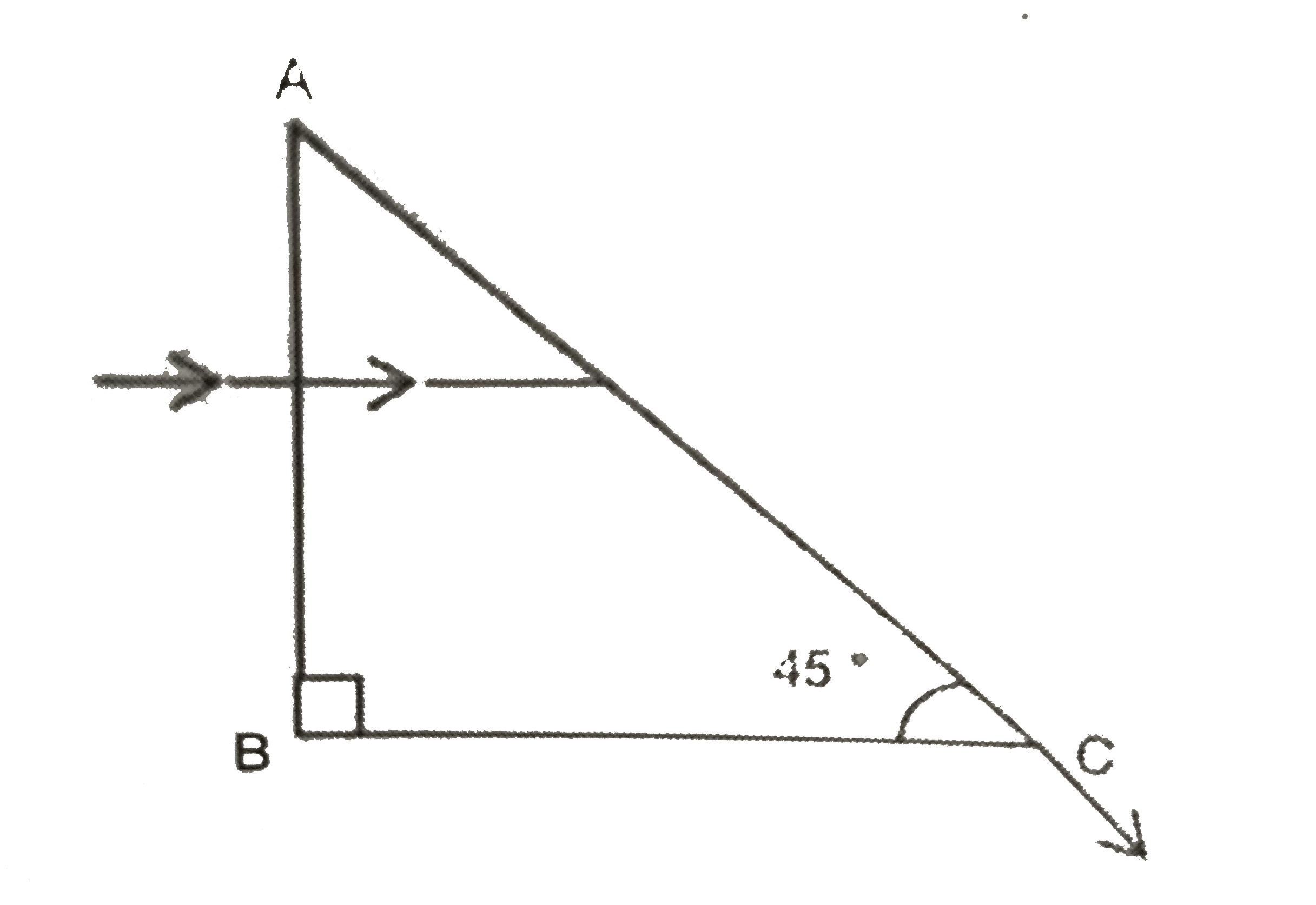What is the required condition, if the light incident on one face, does not emerge from the other face ?
For no emergence,
Squaring both sides,
The greatest value of sin
.

Topper's Solved these Questions
- OPTICSBook:MTG GUIDEChapter:OPTICSExercise:Topicwise Practice Questions
Explore 200 Videos
- OPTICSBook:MTG GUIDEChapter:OPTICSExercise:Check your NEET vitals
Explore 25 Videos
- MAGNETIC EFFECTS OF CURRENT AND MAGNETISMBook:MTG GUIDEChapter:MAGNETIC EFFECTS OF CURRENT AND MAGNETISMExercise:AIPMT/NEET (MCQs)
Explore 48 Videos
Similar Questions
What is the required condition, if the light incident on one face of a prism, does not emerge from the other face?
View SolutionWhat is the refractive index of the material of the glass prism shown in the figure, if a ray of light incident normally at the face AB emerges along the face AC?

View Solution
Knowledge Check
What is the required condition, if the light incident on one face of a prism, does not emerge from the other face?
An<cosec (A2)Bn<sec(A2)Cn>secADn>cosec (A2)For an equilateral prism, it is observed that when a ray strikes grazingly at one face, it emerges grazingly at the other face, its refractive index will be
A√32B2√3C2D43
In the above example, find the angle of incidence at face AB, so that emergent ray grazes along the face AC'.
View SolutionA ray of light incident normally on the first face of a glass prism of refractive index 1.6 just emerges from the other face. Find the angle of the prism.
View SolutionA ray of light is incident upon one face of a prism in a direction perpendicular to the other refracting face. The critical angle for glass – air interface is 30°. Find the angle of the prism (assuming it to be less than 90°) if the ray fails to emerge from the other face.
View SolutionThe two perpendicular faces of a right angled isosceles prism are silvered. Prove that a light ray incident on the third face (hypotenuse face) will emerge from the prism parallel to the initial direction.
View SolutionFor an equilateral prism, it is observed that when a ray strikes grazingly at one face, it emerges grazingly at the other face, its refractive index will be
View SolutionA ray of light incident at an angle θ on a refracting face of a prism emerges from the other face normally. If the angle of the prism is 5∘ and the prism is made of a material of refractive index 1.5, the angle of incidence is.
View Solution
